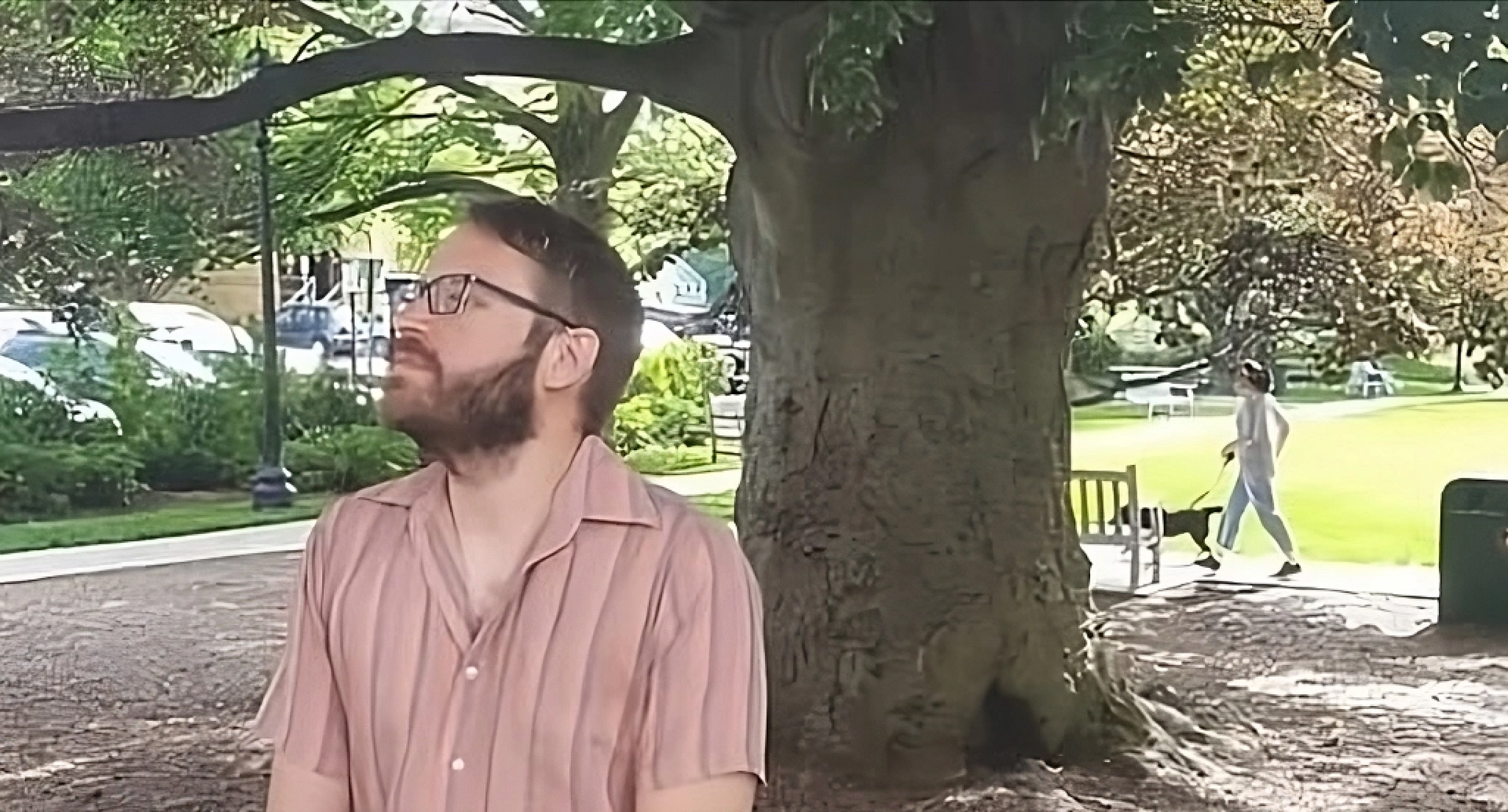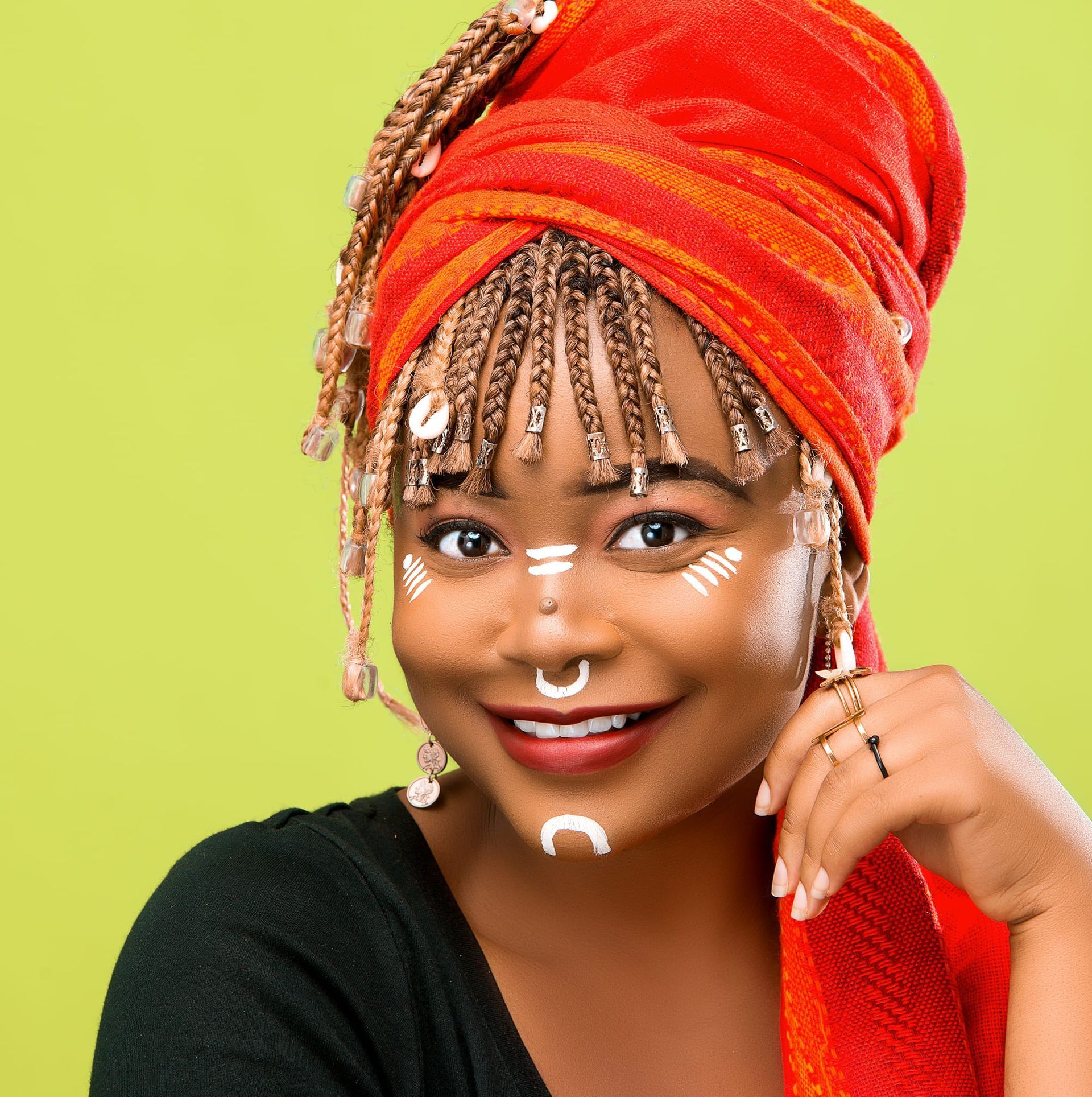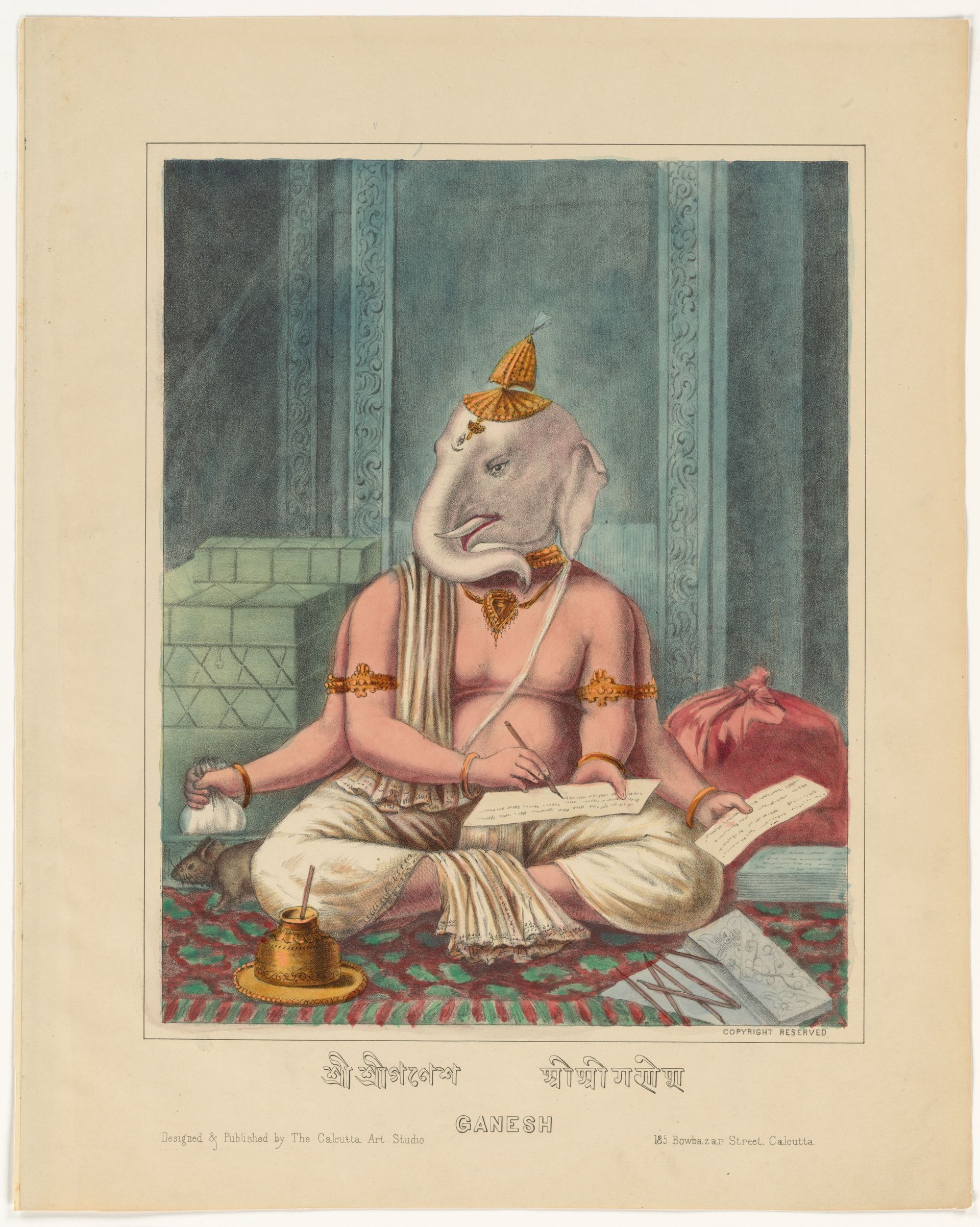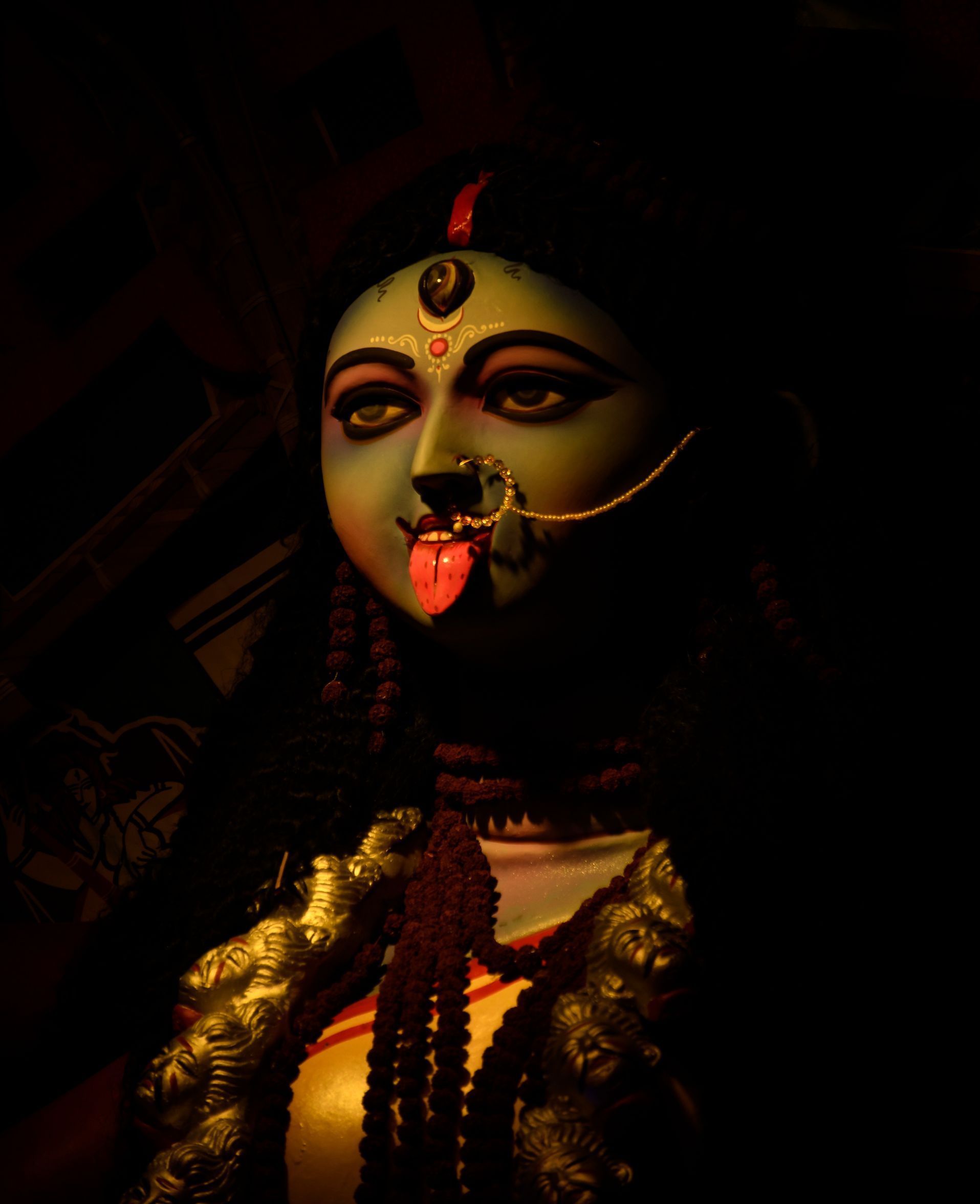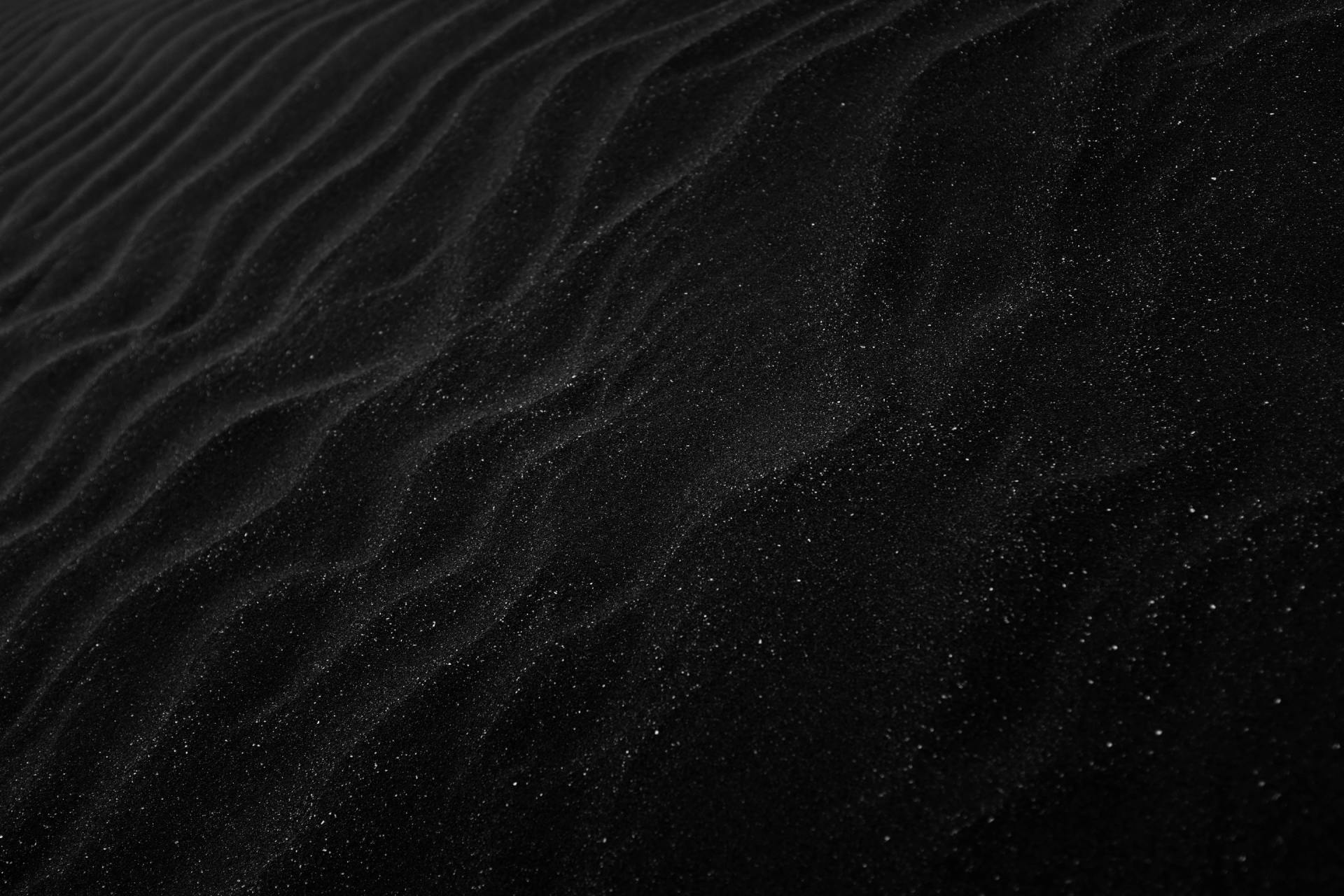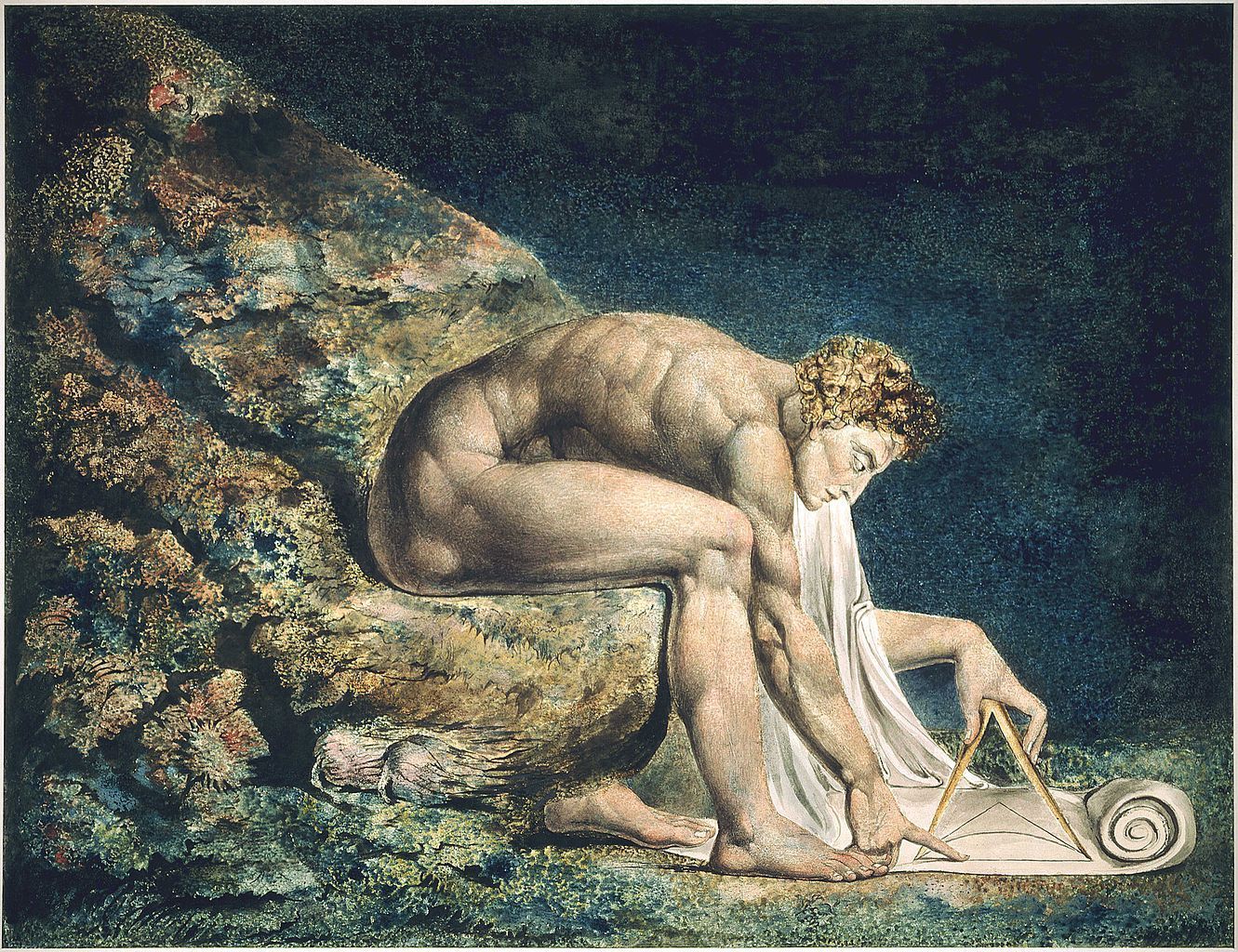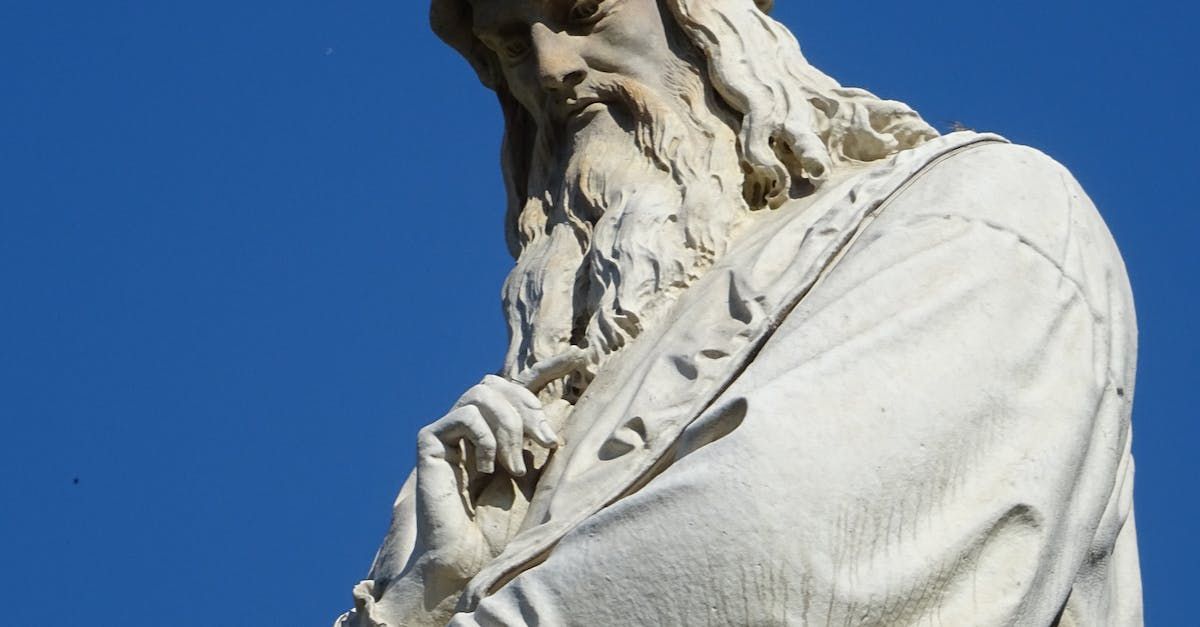ART | In Search of Harmony: From The Roerich Museum to Kerala Mural Painting
« Since time immemorial innumerable are the commandments about the beautiful. Whole kingdoms, whole civilizations were built by this great ordainment. To beautify, to ennoble, to uplift life means to reside in the good.»
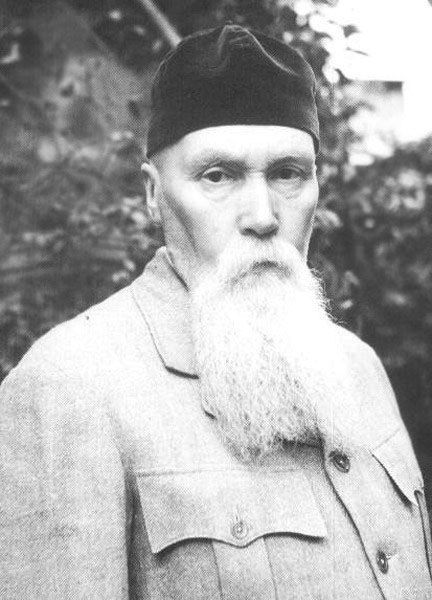
In recent conversations with fellow Renaissance-minded artists and poets, I've come to a startling realization: our understanding of the Southern hemisphere is as thin as the air atop Mount Everest. Why? What happened? When we think of the South, our minds often gravitate towards Africa or South America, vaguely. And we often overshadow India's impact on Western civilization (dating back Alexander the Great’s Campaigns or perhaps earlier).
I've long admired the diverse brilliance of nations and peoples: the Western world's dynamic innovation in medicine, science, and technology, its palpable passion for matter transformation, driving progress and entertainment alike. The Eastern’s spiritual expertise and power to conjure the religious sentiment and depth in us all. Africa and its vibrant ethnicities, her untapped potential and abundant resources, akin to a captivating enigma awaiting discovery.
But reflecting on my experiences across three continents, I've shifted from the romanticism of poetry to embrace a stoic, more Yogic perspective: human societies worldwide are flawed, heterogenous, and none can be idolized. While civilizations tend to retain a certain distinguishable essence, societies deceive and disappoint. As the French saying goes, "Il faut de tout pour faire un monde" (It takes all sorts to make a world). What’s disappointing in the social project is the lack of harmony.
It's not that harmony is unattainable to humans or lacking potential; it's simply a matter of interest, I have come to realize; the hypermodern human is simply not interested in harmony. Interest (where we put our creative energy) explains a lot of things, and is becoming a psychological theory, also indirectly explored in socio-biology (evolution theory) through altruism.
Certain humans, apparently, are so interested in offering beauty to the world, to their communities, that they devote their lives to it. It goes beyond interest, indeed, since a lot of them are mistreated by their time and contemporaries, when they do so, only to be celebrated with ridiculous laudations in billions they won’t even spend.
Rimbaud had to retire before his poetic and spiritual genius reached maturation because living a life of Bohème with Verlaine, his enabler who was far less talented, and perhaps more ludicrous than the 16-year old child poet, didn’t lead him anywhere except into marginalization. Van Gogh couldn’t afford a meal and died ravaged by hypersensitivity turned into mental illness.
Our ruthless epoch doesn’t spare anyone veering from 'the official art,' a term I borrowed from one of our patrons to describe the dominant discourse in contemporary art since Marcel Duchamp and his minions declared classicism dépassé. Since the beginning of the 20th century, marked by the rise of avant-garde movements influenced by post-WWII German ideas, such as Dadaism and Surrealism, which gained traction in France and America, genitalia and bodily fluids once excreted are art, and that kindergarten erasure is art too, you may be the next Basquiat. Yes, disgust, ugliness, and meaninglessness have been considered art, ever since, as long as the artist uses a verbose, empty, and cryptic rhetoric to account for it. As long as it denounces “social justice” (and makes money), “political oppression” (shocks and makes even more money), “freedom of creation,” (basically license and meaninglessness) etc. The neglect of beauty and skill has tragically become the norm in today's contemporary art movement. Many avant-garde artists fail to recognize that their creations have become conventional, as they follow the same repetitive patterns.
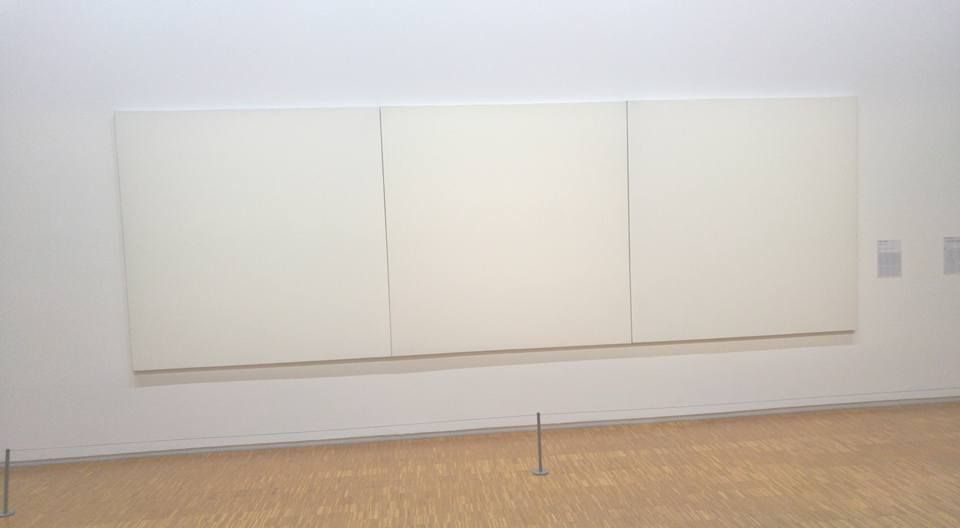

In case you didn't notice, according to the curator at Georges Pompidou's Contemporary Museum in Paris, the artistic merit of this piece is in blurring the lines between paint and wall. I have a strikingly similar artwork at home - my plain old walls! Also, the piece is titled “Untitled,” quite predictably... Utter meaninglessness. I wish I hadn't taken that picture (March 23, 2018), but I did. I knew it would serve to illustrate a point one day.
Pieter Weltevrede,
our sixth Apotheosis, describes the artist's journey as a struggle. Despite facing adversity, he has achieved recognition in a genre that gallerists often overlook, as it focuses on enlightenment rather than shock value. Weltevrede sees art that honors beauty and transcendence as belonging to the future—a sentiment I wholeheartedly share, eagerly awaiting that kingdom come. In Yogic philosophy, personality tendencies—defined as a dynamic mix of inertia, passion, or harmony—drive the interests, habits, and behaviors of an individual. I have already expounded on this here, if you want to dive into the subject. In such a context, no one is purely good or evil, as these tendencies or gunas tend to dominate personalities and qualify consciousness, accordingly. I suspect lovers of beauty (expressed through skill and the appreciation thereof) who also showcase a marked interest for transcendence and the noble feelings Nicholas Roerich mentioned, may be closer to the harmonious type. Beauty, meaning, and elevation stimulate them, as they strive for more knowledge, somehow disregarding the comfort their individual self deserves to experience. In other words, bodily discomfort is a little price to pay for Meaning. That’s the ascetic or Yogi’s posture, a very noble one. Except asceticism is supposed to bring you closer to the source of life and joy, not deprive you from it!
There is a lot of joy in museums, a word which initially means, “homeland of the muses.” Among my favorites are The Met, renowned for its exquisite European master collection and sacred vaults; the Museum of Natural History, offering a comprehensive history of human civilizations, highlighted by the awe-inspiring Totem Pole; and the Nicholas Roerich Museum, a hidden gem nestled in a brownstone in the Upper West Side. Stepping into these hallowed halls, or exploring public cathedrals, temples, and even unconventional spaces like the cathedral-turned-bar on 5th avenue, or the vibrant streets of Paris, Bruges, or Barcelona—where Gaudi's influence is palpable—I am reminded of the harmony in thought and form inherited from the altruistic gestures of inspired artists and mystics of the past. Yet, I find myself pondering why, in the era of contemporary art, where harmony is increasingly scarce and art is often commodified rather than cherished for its intrinsic value, we neglect such essential qualities: Beauty. Harmony. Order. Truth. In Sanskrit, these are encapsulated in the word 'sattva.' Is it because they are gifts from the past, and what we have not struggled to attain holds less value to us?
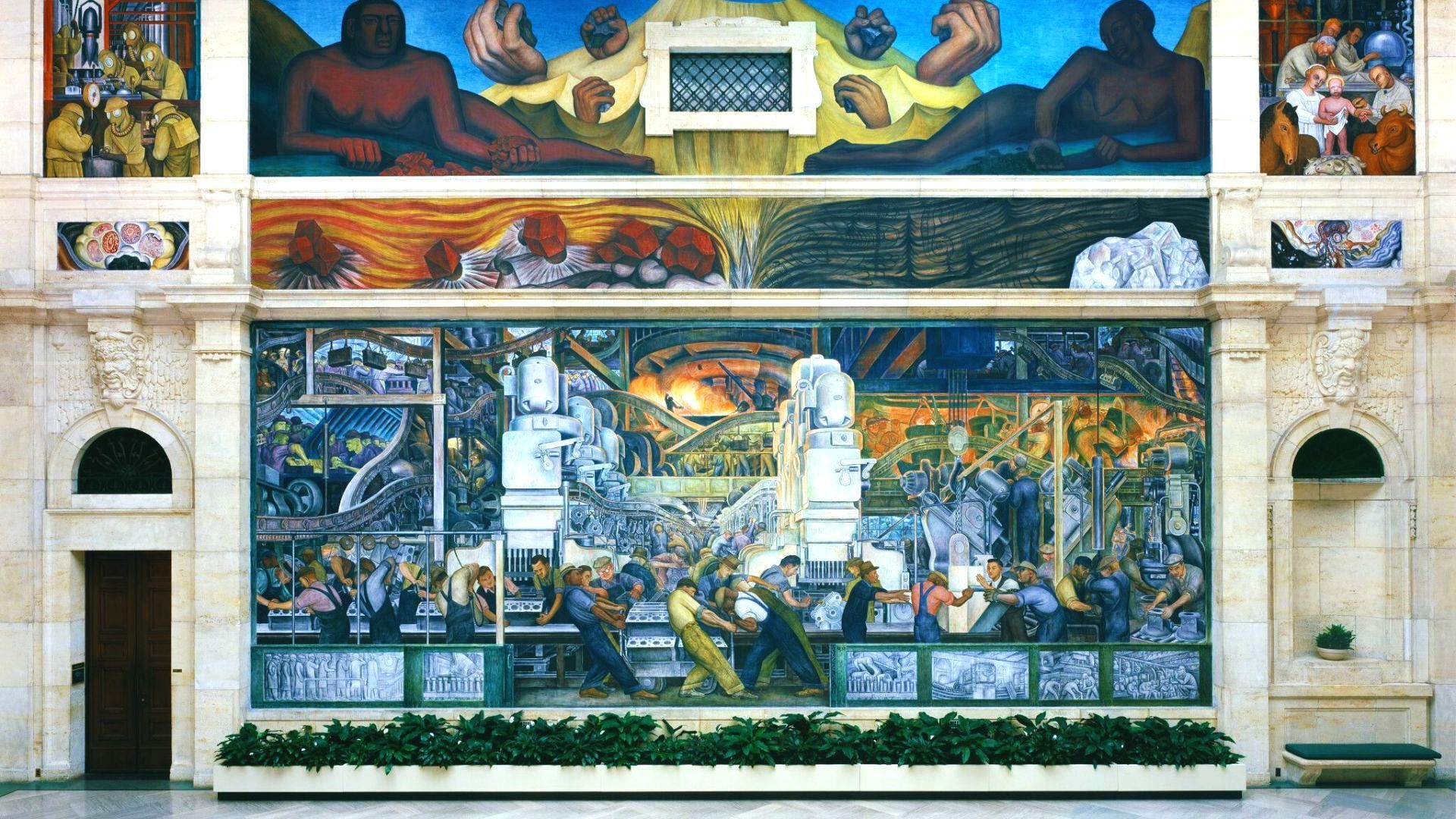
Slide title
Photo: M. Mobengo, 2018
Button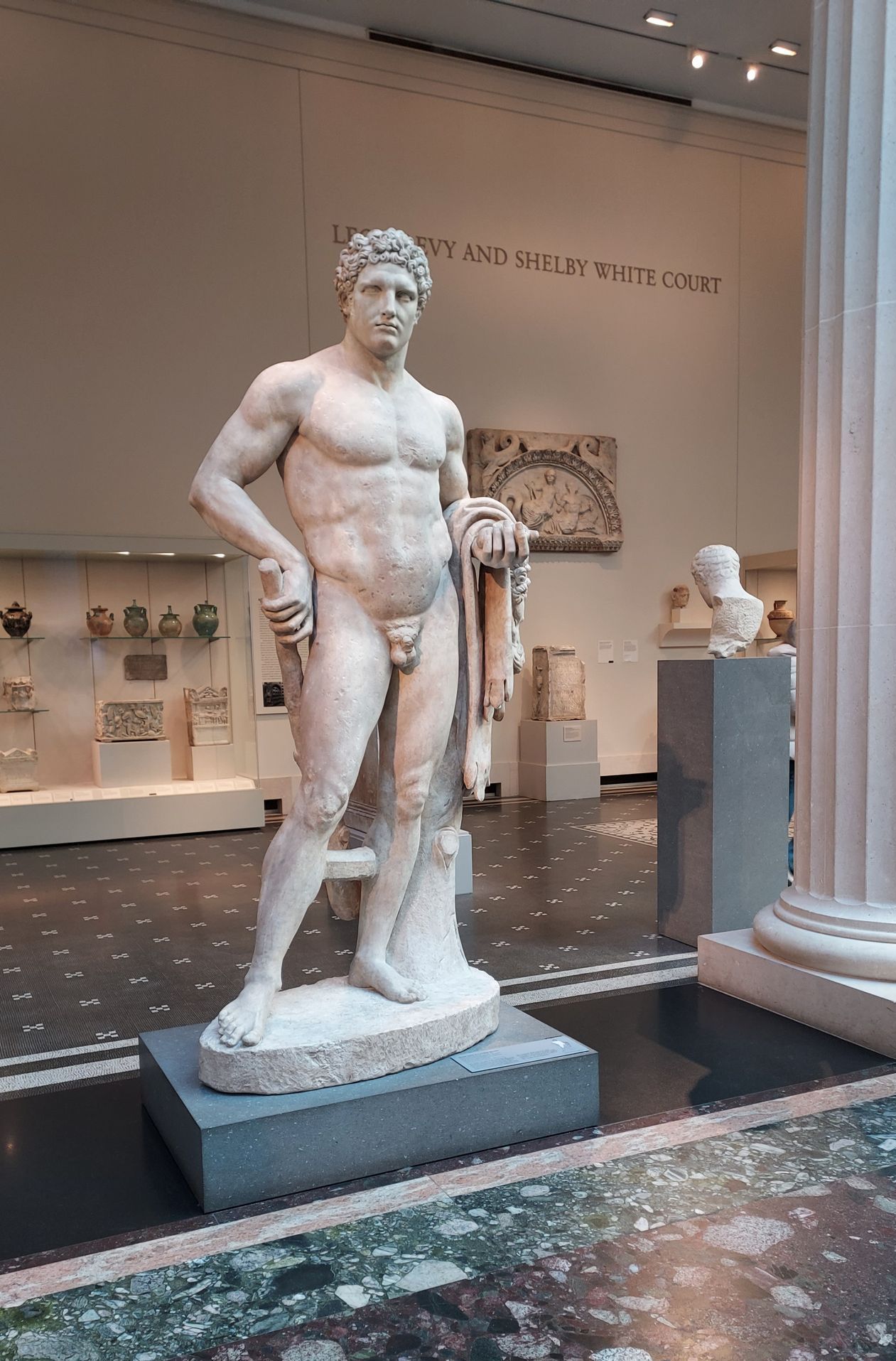
Slide title
Write your caption hereButton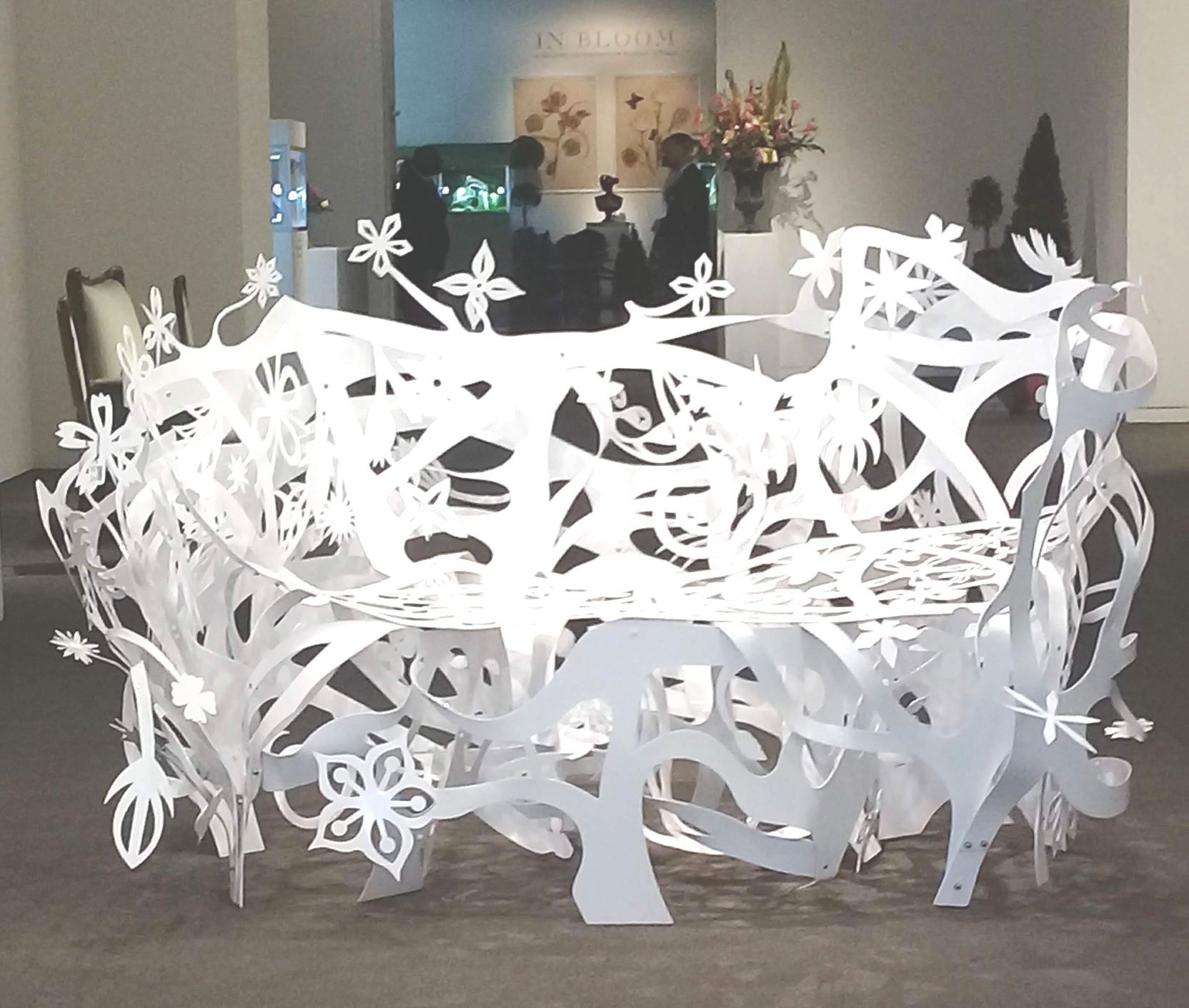
Slide title
Write your caption hereButton
Slide title
Write your caption hereButton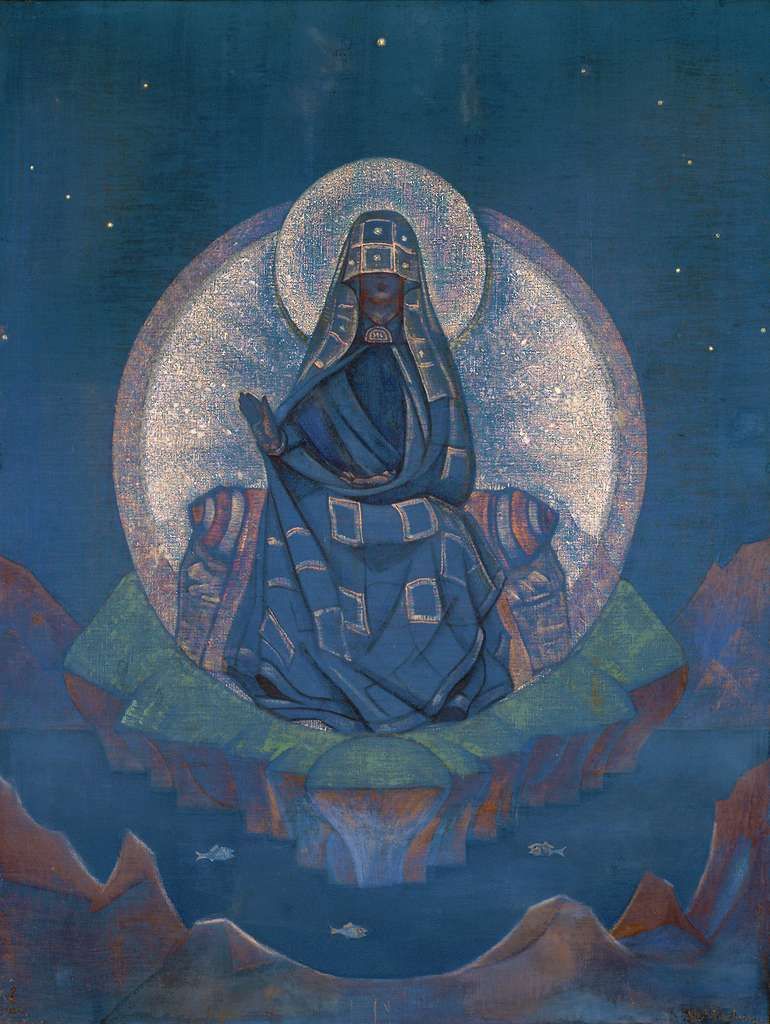
Slide title
Nicholas Roerich, Mother of The World (1924). Source: Picryl
Button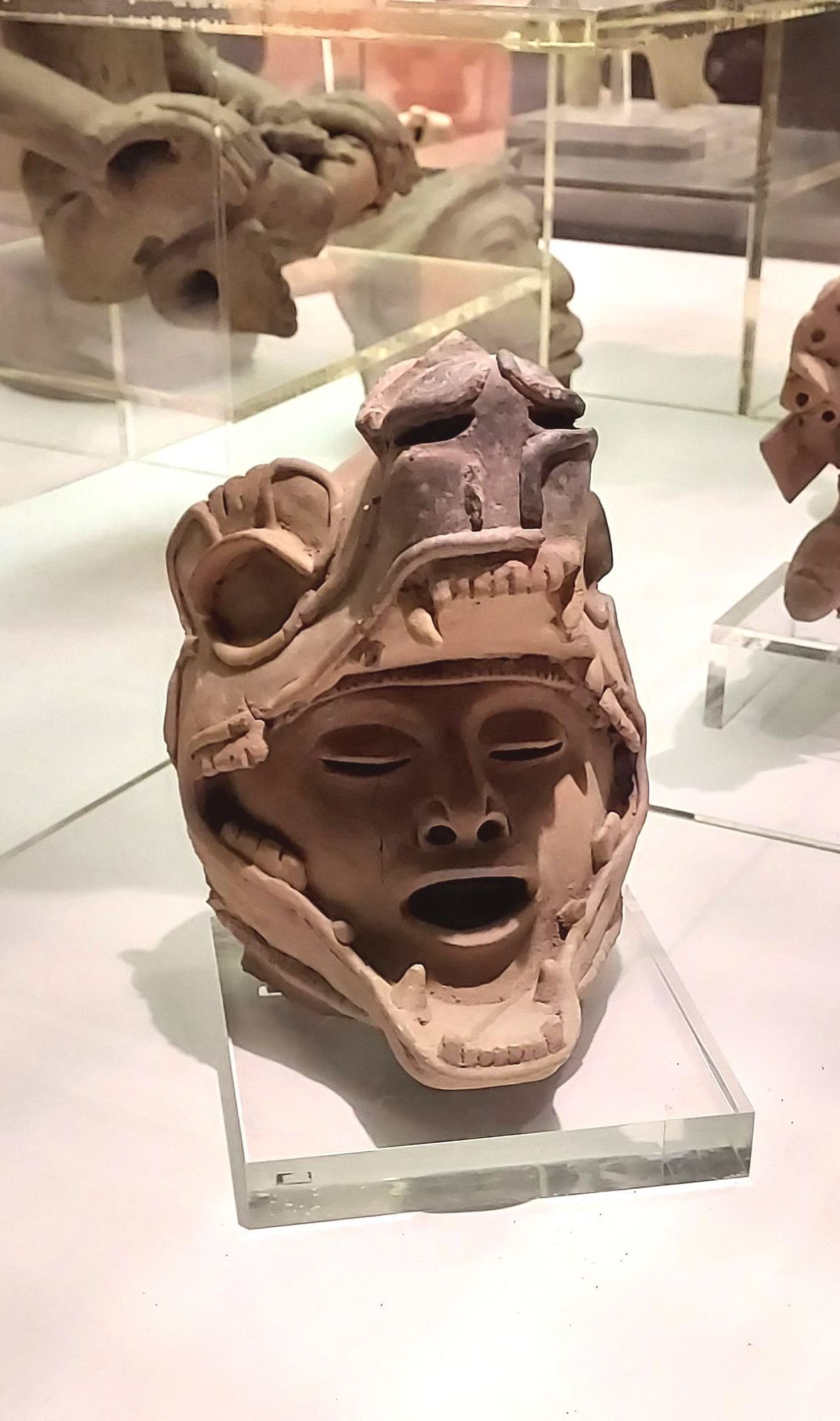
Slide title
Write your caption hereButton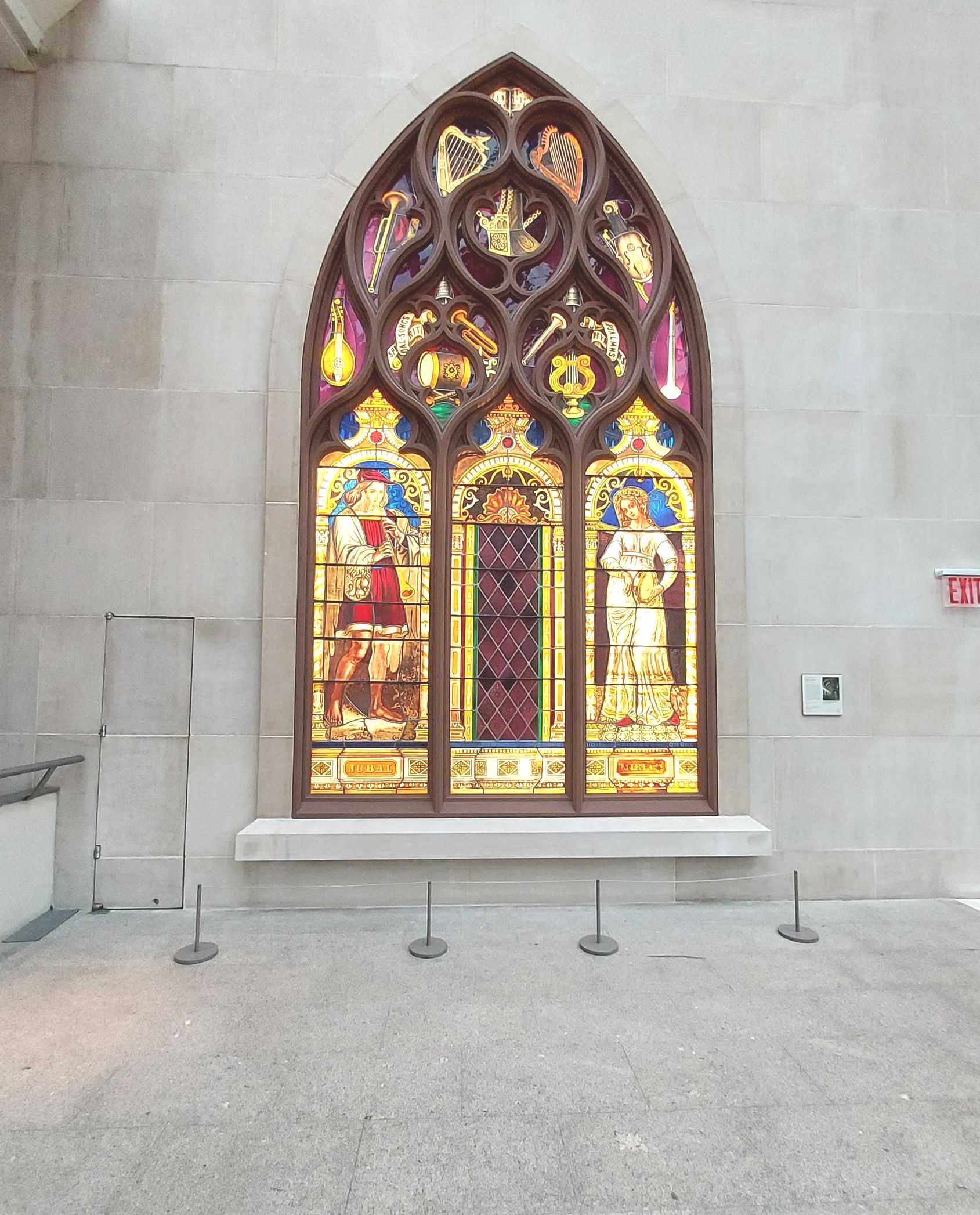
Slide title
Write your caption hereButton
Selections from New York's renowned museums among my cherished artworks, and the captivating fresco by Diego Rivera adorning the entrance of the Detroit Museum of Art. Modernism, when imbued with depth, can manifest visions of enduring beauty while causing us to reflect deeply on the march of history and our role in it. However, when modernism prioritizes aesthetics only, it can result in pieces like the visually striking yet impractical 'unsittable sofa' found in the Sotheby's Gallery. Photographs: M. Mobengo (except Roerich's "Mother of the Word").
Nevertheless, while human beings are inherently capable of selflessness, for many, this faculty lies dormant within their souls. Harmony, or selflessness, is often referred to by mystics from all traditions as 'impersonality'—the sustained and deliberate effort to align oneself with the Divine, that is the authentic goal of Yoga. From this effort of identification with the cosmic and creator Self, genius, or extremely refined perception is achieved and expresses itself naturally. Human beings pray to God because he is the archetype of loving impersonality, generosity. Striving to embody these qualities in one’s lives obviously connects one to their source. Altruism, as the ultimate act of generosity, is the outlet of genius not only for its rarity but also because it reflects a deliberate, disinterested gift of meaning and beauty. This legacy, both in thought and form, is a testament to the selfless dedication of mystics and inspired artists and poets from the past who devoted their lives to enriching ours.
There is genius, and altruism (therefore Harmony) in Yoga and Kerala Mural Painting, which I will introduce you to in this article through my recent experiences.
Kerala Mural Painting, a Legacy of Yoga
The art of Kerala Mural Painting is intricately woven with the essence of Yoga, embodying the harmony or perfection sought after by individuals, regardless of their interpretation of what constitutes perfection.
Often misconceived as mere physical exercise aimed at achieving eternal youthfulness, Yoga is, in fact, a humane philosophy, a container of various facets of human perception and intellectual sensitivity, ranging from animism to ritualism, atheism to rational philosophical systems such as Samkhya, and from theology to poetry, music, art, and mysticism.
Codified by Sage Patanjali's teachings in Yoga Sutra, the canon of Yoga operates with minimal rules, one of which emphasizes the importance of seeking guidance from established lineages.This spiritual tradition, uninterrupted and tracing back to ancient Yogis like Matsyendranath, Shiva, or Krishna, ensures the integrity of the Yogic method and permeates all aspects of life and disciplines, including the fine arts.
The core message of Yoga remains unchanged: when the mind ceases, harmony is found, and the Blissful Self (Ananda) is realized.My strong desire for transformation led me from poetry to Yoga and eventually to becoming an artist enamored with Kerala Mural Painting. This journey, I will share with you, through 7 discoveries.
Discovery #1: Art is an Austerity
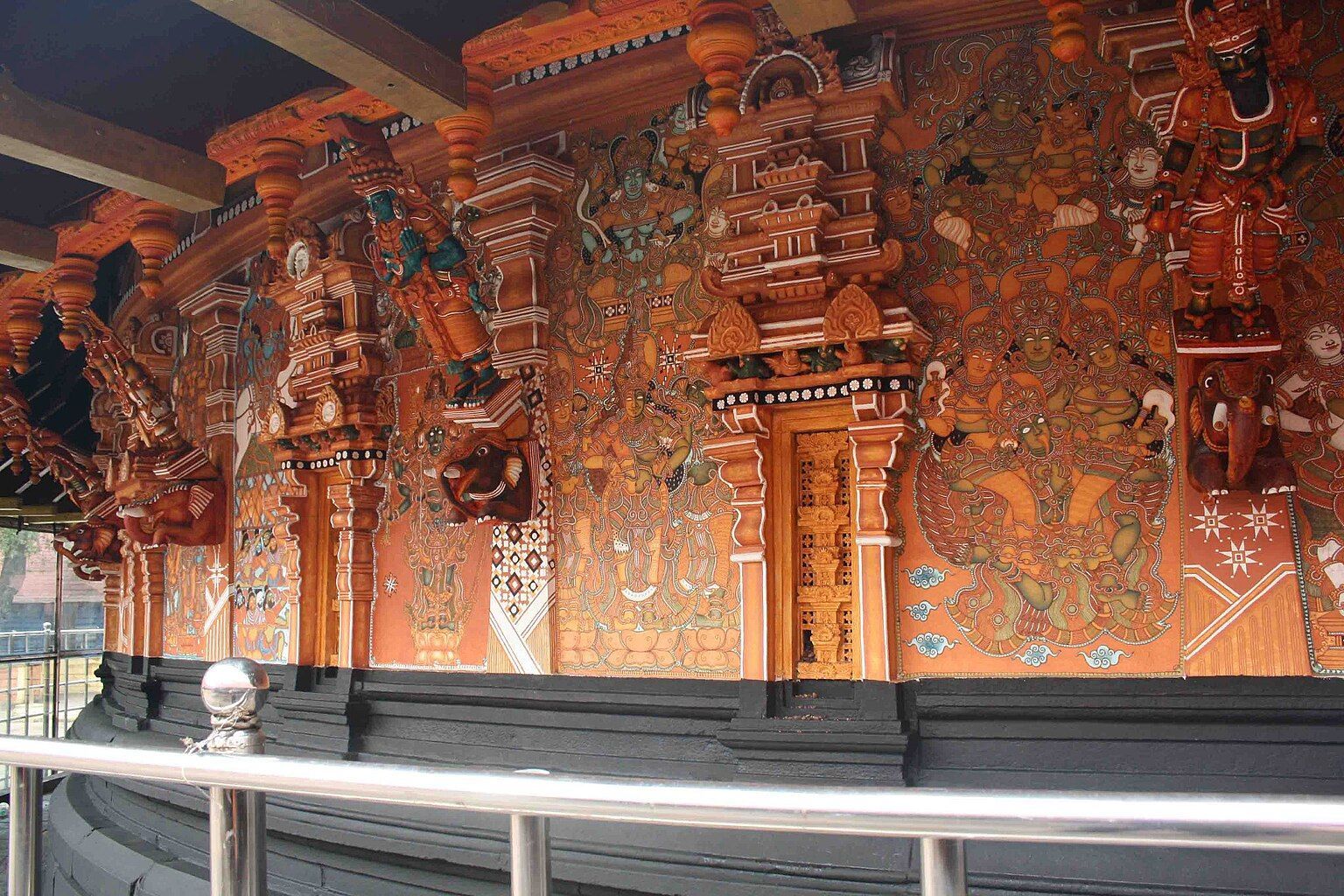
Facade of the Vaikom Sree Mahadeva Temple (southwestern India) adorned in Kerala Mural Painting's characteristic lavishness and warm, earthly tones. Source: Wikimedia commons
In the past, the media's portrayal of artists as instinctive geniuses reveling in chaotic studios fascinated me. Now, these depictions make me laugh. Painting surpasses fun or even performance. It is an austerity, (tapas, in Sanskrit), akin to prayer, meditation, or mantra chanting. As I wrote this, it struck me: this is precisely why Pieter Weltevrede paints in the lotus position!
While aspiring artists may find value in every moment dedicated to replicating nature’s forms or imitating Renaissance artists, there often remains a sense of emptiness post-project, leaving one pondering, "Is that all? What comes next?"
Kerala Mural Painting brings about a unique feeling, blending tranquil and sweet bliss into daily life, a sense of fulfillment in striving to honor harmony, reminiscent of the joy found in music as I mentioned earlier. This connection to the essence of Yoga is therefore palpable as you practice, given its deep-rooted origins in spiritual traditions.
Discovery # 2: A Unique Pictorial Language Crafted Through the Ages
Kerala Mural Painting's origins may trace back to the excavation of the Badami Caves in southwestern India. Badami, once the capital of a Classical Indian dynasty from the 6th to the 12th centuries, boasts Cave No. 4, known as the Vishnu Cave. These cave paintings feature striking depictions of palace scenes and courtesans of the Vedic God Indra—an intriguing figure worth exploring further if you are not familiar with Vedic mythology.
Over twelve centuries in the Indian subcontinent, artists refined Kerala Mural Painting into a magnificent expression, influenced by antiquity, medieval Turco-Persian styles, and Mughal invasions. These artists, often patronized by royalty, developed a distinct set of colors, anatomies, emotions, and postures in their work.
Discovery #3: The Figures, Postures, and Colors of Kerala
Male figures, slim-waisted and adorned in hues from darkest blues to lightest pastels, contrast with vibrant reds, greens, and oranges adorning female figures, depicted as celestial beings, Goddesses, or mischievous and loving entities. Humans and animals, terrestrial or celestial, are elevated to Divinity. However, narratives can portray anyone as terrifying. Postures are noble and blur gender lines. The style evolved over time, incorporating perspective against lavish, flowery backgrounds, subtly representing the five elements.
Discovery # 4: The Sources of Kerala Mural Painting
The vibrant chromatique and fluid lines captured themes drawn from sacred, religious, mythological, and poetic sources, often portraying scenes from The Puranas, the mythological corpus of Hinduism. I have seen Christian art in Kerala Mural Painting and their innate sweetness and joy, devoid of the usual somberness in Christian art, mesmerized me.
Discovery #5: Relevance to the Modern Artist
Kerala Mural Painting holds a dual significance in our Ars Poetica series. Firstly, it broadens our global artistic and poetic understanding by exploring traditions beyond familiar cultural boundaries. For example, our current issue features the Apotheosis interview, showcasing our mission to cultivate curiosity in our readers through Indian Art. In subsequent issues, such as the 7th, we will continue this exploration with topics like Haida Art, Norse Mythology, and specific African art forms. This commitment is central to our editorial vision.
Secondly, we challenge the misconception of the "dark artist" by highlighting the life-affirming essence of creation across various myths worldwide. From my extensive exploration of cosmogonies, I've found a consistent theme: creators are driven by joy, love, or even boredom, resulting in a cosmic burst of energy and beauty.
In my extensive exploration of cosmogonies across the five continents, encompassing literary translation and symbolism studies, I have yet to encounter a creation tale beginning with a somber creator or creatrix consumed by anger and despair, extinguishing both themselves and all potential life. This narrative incongruity persists even in younger mythologies like Voodoo, highlighting the dynamic and life-affirming essence of creation.
Artists, like mythical creators, have the ability to bestow Beauty upon the world, reflecting their own majesty in their creations. This notion is echoed in the works of artists such as Pieter Weltevrede and others featured in our editorial residencies. These artists exemplify various stages of creative power: the initial fervor, the pursuit of pleasure in creation, and ultimately, the recognition of the primacy of Beauty and Oneness in both art and life, as embodied by Pieter. Through our acts of creation, we offer Beauty as a gift to the world, to others, and to the divine, affirming the inherent power and transformative potential of artistic expression. Creation is an act of power. Real depression is a disease requiring attention and care regardless of creative pursuits.
As an artist, poet, and mystic, I challenge the misconception of the "dark artist" by highlighting the life-affirming essence of creation across various myths worldwide. Creators are driven by joy, love, or even boredom, resulting in a cosmic burst of energy and beauty.
Artists, like mythical creators, have the ability to bestow Beauty upon the world, reflecting their own majesty in their creations.
I've been practicing "Maha Yoga" or Original Yoga (as codified by Patanjali and revived by Sri Ramlal Siyag) since...7 years actually, not 5. My intellectual and creative inclinations, once hindered by confusion and negativity, have significantly evolved and reached a peak. With the support of a more tranquil inner life, my creative skills have greatly expanded, covering various artistic forms from poetry to music, including instrument playing. Despite being a music enthusiast and a decent singer, I lacked the ability to play any instruments until recently. I now own two guitars, a ukulele, and a baroque soprano recorder, although unsure about the latter.
I am contemplating acquiring a Veena and piano in the future. While my musical progress has been consistent, I still grapple with composition and some guitar techniques. In the summer of 2023, a remarkable burst of creativity sparked when I unexpectedly immersed myself in intense drawing and painting. This video documents that transformative experience.
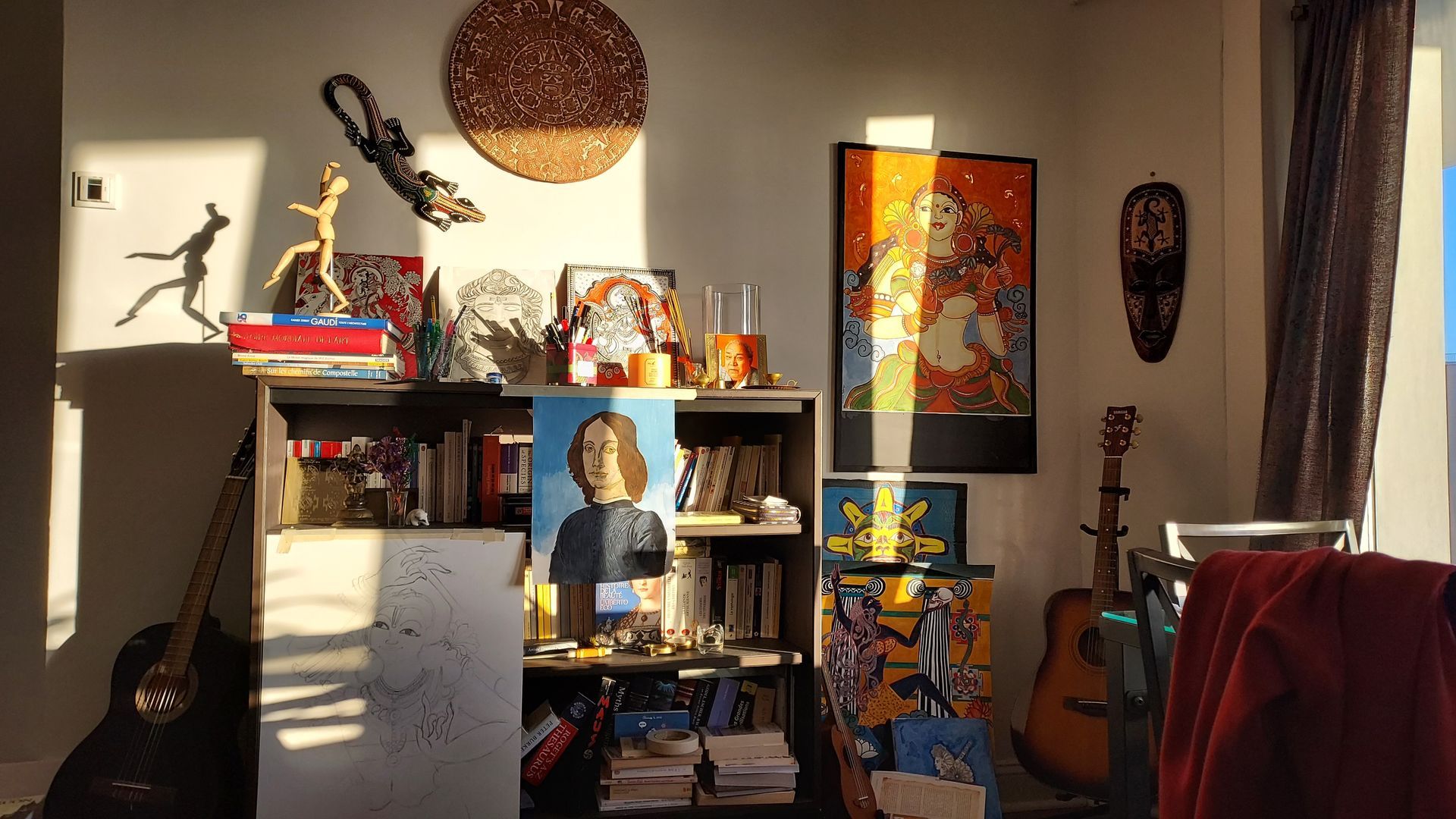
My art studio.
Discovery #6: Neither Confused Nor Elitist
Across generations, the artistic legacy of Kerala Mural Painting has flourished, nurtured by royal patronage and evolving into majestic temple adornments. With the potential to become a global movement, akin to Yoga's transcultural reach, Kerala Mural Painting is now transcending geographical boundaries and elitism. It finds its way into the lives of ordinary people, adorning Western homes with its sweet and distinctive style, extending beyond the cities and villages of India.
This rich artistic tradition deserves recognition worldwide. However, our modern perception of art as non-traditional, individualistic, and free of structure hinders its acknowledgment in Europe and America, where galleries sensitive to classicism and subtle imagery are lacking. The Apotheosis interview and articles like this one aim to contribute to changing that landscape.
Discovery #7: Seek Beauty.
Instead of buying from unfamiliar artists, why not connect with them personally? Reach out and converse with artists you already know. And why not learning the craft from them ? Move beyond consumption to genuine connection with fellow seekers of beauty. Beautify!
Artwork in Kerala Mural Style: Maiden Dressed in Glory («Jouvencelle en habit de gloire») by
Murielle Mobengo.
November 2023.
Acrylics on Fabriano Cotton Paper, gilded with 4 carats. 50x70 cm (19.6x29.5'').
The Jouvencelle has since departed from New York to Brisbane, Australia, where I trust she will bring her charm to the new owners' home.
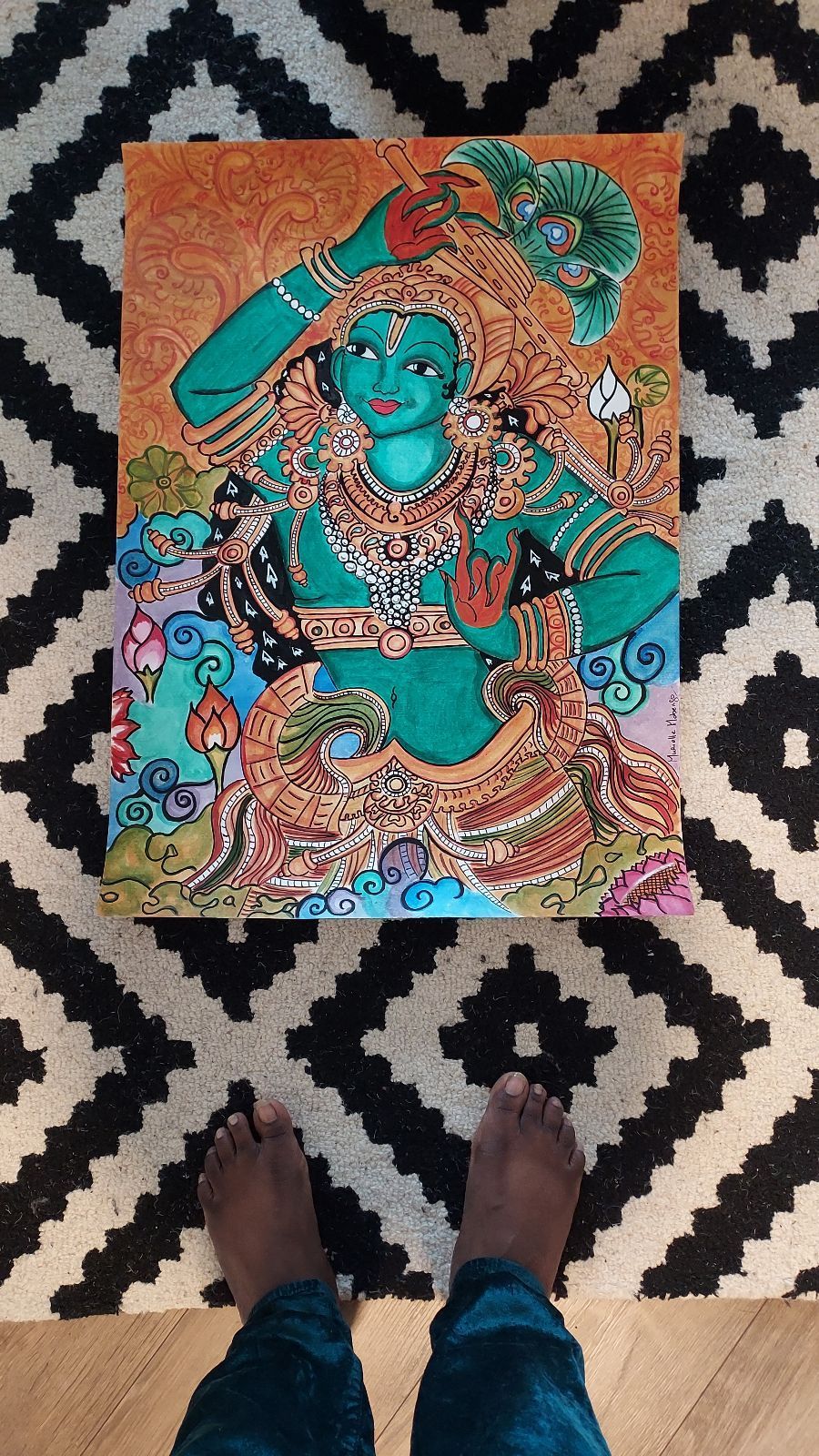

Murielle Mobengo is the editor-in-chief and founder of Revue {R}évolution, as well as a poet, and an apprentice in art. In her thinking and writing endeavors, she inquires poetic existence, the origins of poetry and its intricate connection with mythology, the spiritual underpinnings of art, and philosophy. Murielle composes poetry in French, English, and German, and has a fondness for Western ancient languages and Sanskrit. She perceives symbols as a unified language expressing pantheism, and describes herself as a symbolist and a mythologist. Murielle Mobengo is a disciple of Kashmiri Shaivism, the non-dualist Eastern philosophy which traces its roots to the birthplace of Yoga.
Resources & books supporting this blog post
- The Nature and Power of Interests, James Rounds and Rong Sua, University of Illinois at Urbana-Champaign, Association for Psychological Science (aps), 2014.
- "The Cold War of art and the design of democracy (chapter IX)" in Aftermath, Life in the Fallout of The Third Reich 1945-1955 by Harald Jähner, Penguin Random House UK, 2019-2021. Original: Wolfzeit. English translation by Shaun Whiteside
- Hinduism Today, Special Features: Muralist of Kerala by Bhaani Sekhon, January 2021
- Beautiful Unity, Nicholas Roerich, Nicholas Roerich Museum, Inc., New York. First published in 1946. Second enlarged edition 2019
- Note on the author's mythology expertise:
"Being a storyteller, I've studied different world mythologies and their origins due to my love for narratives. This passion originated in my paternal family, with roots from Pygmean and West African heritage, where children are raised surrounded by mythology. They are given a mythological name in addition to their legal one (which remains undisclosed), and are also taught the family's mythological history by the family griot or healer,
the nganga. Africa is indeed captivating, and I feel fortunate for my double French-African cultures!
But I am also a professional translator, and as such, I have participated in the translation of Lemurian Scrolls, a cosmic myth that emerged from the Hindu monastery of Kauai in the 1970s and remained confidential for two decades until recently when it became accessible to everyone. This translation was a collaborative effort spanning five years between myself and erudite monks who were both yogis and mythologists.
The English text, although challenging to interpret due to its channeled nature, was penned with intuitive insight in a stream-of-consciousness style by Satguru Sivaya Subramuniyaswami. It elucidates the origins of religious myth and philosophies, from animistic creed to pantheisms and monotheisms, and represents a unique blend of mythologies, offering a contemporary mythos suited for our times.
For those fluent in French, I suggest examining the French translation we have crafted as it provides enhanced clarity compared to the original text. However, this does not diminish the narrative and spiritual depth of the English version. The French text is only in service of it. You can access the Lemurian Scrolls channeled by Satguru Sivayasubramuniyaswami here or delve into our French rendition." –Murielle Mobengo
Note: Please remember to honor the author/artist's work when referencing this article (and others in general). Instead of copying and pasting, share the article correctly by providing its link and attributing it to the author. It's essential to respect copyright laws. Thank you.
🎯 More on the subject:
Share this article! ❤️
Revue {R}évolution
